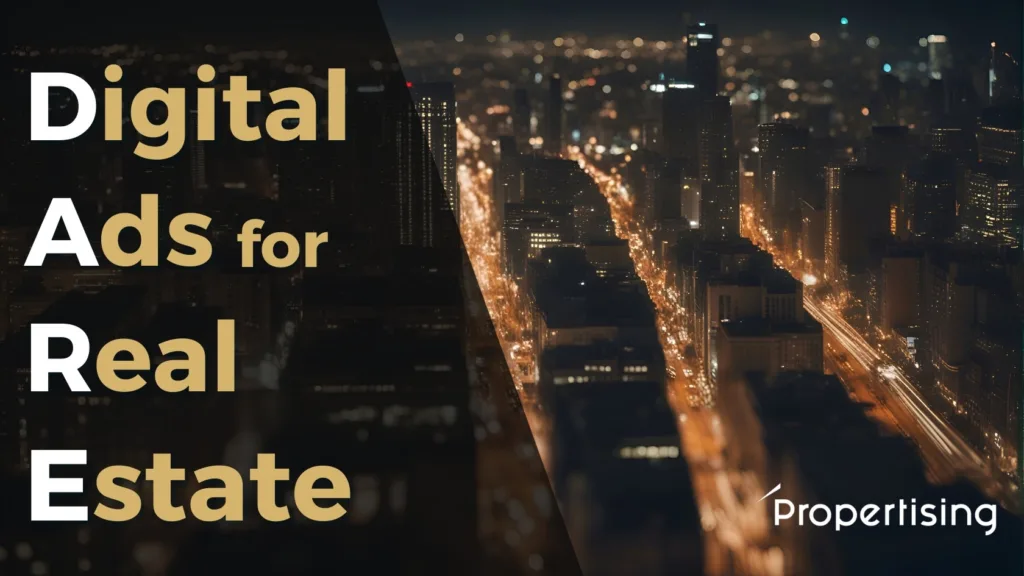The most frequent question I get from Real Estate Developers is “How to Start with Digital Ads and What Works Best for Real Estate?”
The digital world can seem overwhelming for a beginner. But is it too complicated?
To be honest, everything can be confusing and difficult when you are a beginner. It can even be complicated for an advanced user, depending on what the final objective is.
So, if you want to conquer the digital world and build a long-lasting presence for your real estate business, you can start by using a simple yet effective framework that will help you make all the necessary calculated decisions.
This framework is a loop, which means that once you finish all five steps, you have to evaluate your work and start from step one all over again. This is why you should not expect your first attempt to be the most optimized and fruitful as it can be.
So, here is DARE – Digital Ads for Real Estate – , and I do dare you to try it if you want to begin your digital journey and do not know where to start.
Are you ready?
Step One: Set Your Short-Term and Long-Term Goals
This is the single most important step of the framework. Written goals perform better. This is not news. But how do you write down your goals?
Long-term: Set goals that are 3-5 years ahead in the future in terms of performance you would like to achieve. Use actual numbers when setting your goals, such as actual turnover or number of properties you want to sell, clients you need to close, etc. that you aim to achieve within the timeframe. Once you have a realistic number, then you move to the requirements to meet the goal. That means that you must calculate your capacity and ability to reach that goal (e.g., staff, business structure, funds, etc.).
Short-term: Set goals that you want to achieve and have the capacity to handle within one fiscal year. Make sure your goals are aligned with the market and are realistic. Wishful thinking is just wishful. So, please be realistic.
Step Two: Write down all your promotion, marketing, and advertising costs.
If you are in business, you perform actions that promote your sales. Now is the time, if you haven’t already, to calculate everything you are spending on these offline and online promotions that support your sales. You have to calculate everything. Here are some examples:
- Realtor’s commissions. I know you are not paying commissions in advance, but truth be told, those commissions are money being spent for the promotion of your properties. The reason this is a high cost is because the real estate agents take the risk to promote your properties for you without knowing whether and when they are going to sell. Nevertheless, the costs are real and you end up paying money to those partners.
- Website creation and maintenance.
- Offline materials like brochures, flyers, construction site signs, etc.
- Platform fees.
- Sales expenses that are being covered for the promotion of your properties, for example, all the expenses that your sales representatives have for this specific purpose.
- Current online advertising expenses, whether it is social media boost posts or e-mail campaigns you randomly do within the year.
- If you manage your own social media, you can also calculate the cost of maintaining them in terms of how much time it takes you to handle them and how much that would cost on an hourly basis if it was handled by another person.
Now that you have written your total costs, you have to segment them into yearly, quarterly, and monthly costs. If some costs are not applying monthly, you just make a division so that you have a “fictional” monthly cost.
Calculating your current expenses is critical because you will have a holistic idea of how much you actually spend now.
In my experience, small businesses rarely have any idea of how much money they spend on promotion, so when they decide to start with digital ads, they always have this false idea that they should spend so much more money than they are used to. The fact is that if you do not know how much you spend already, there is no way you can make a realistic comparison.
Another reason you are required to calculate your current costs is that in case you cannot afford to add another expense to your current budget, you can allocate a budget from some of those activities you are currently using, and they underperform already. So if you keep a practice that you are just used to but are not performing anymore, you can allocate that amount of money and invest it in digital ads. If, of course, any of those practices work great, then you do not have to change them at all.
If this framework resonates with you so far, great! See you in Part 2 where we move into the fun stuff!
Next few steps on Part 2.
See you there!





